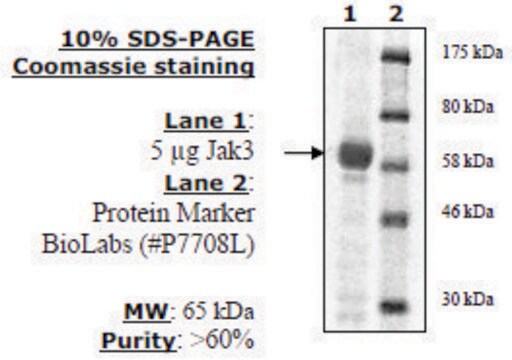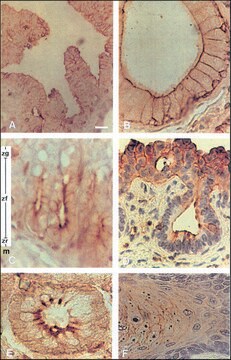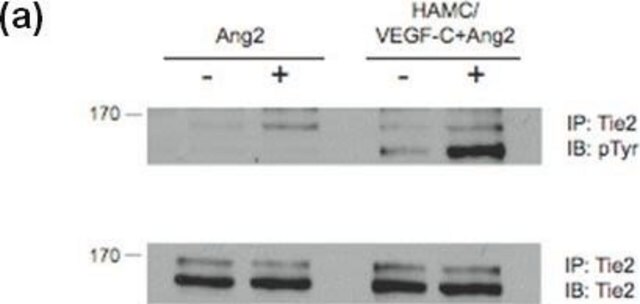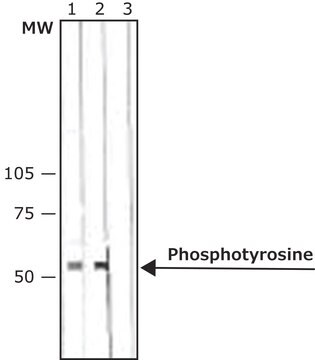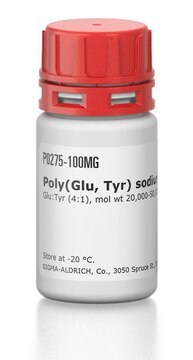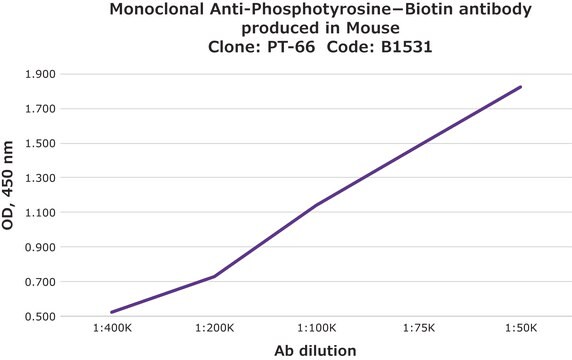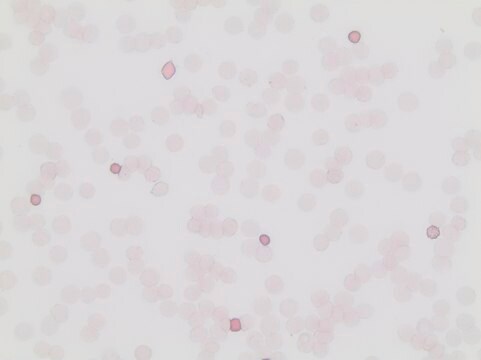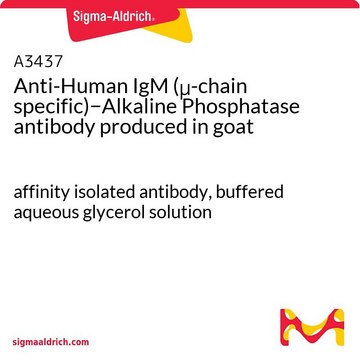A5964
Monoclonal Anti-Phosphotyrosine–Peroxidase antibody produced in mouse
clone PT-66, purified immunoglobulin, lyophilized powder
Sinónimos:
Monoclonal Anti-Phosphotyrosine, Phospho-Tyr, Phospho-tyrosine, p-Tyr
About This Item
Productos recomendados
origen biológico
mouse
Nivel de calidad
conjugado
peroxidase conjugate
forma del anticuerpo
purified immunoglobulin
tipo de anticuerpo
primary antibodies
clon
PT-66, monoclonal
Formulario
lyophilized powder
envase
vial of 0.2 mL conjugate
técnicas
direct ELISA: 1:60,000 using Phosphotyrosine-BSA
dot blot: 1:40,000-1:200,000 using phosphotyrosine-BSA using chromogenic and chemiluminescent substrates, respectively
isotipo
IgG1
temp. de almacenamiento
2-8°C
modificación del objetivo postraduccional
unmodified
¿Está buscando productos similares? Visita Guía de comparación de productos
Categorías relacionadas
Descripción general
Especificidad
Inmunógeno
Aplicación
- enzyme linked immunosorbent assay (ELISA)
- dot blot
- Chemiluminescence dot blot
- kinase assay
Acciones bioquímicas o fisiológicas
Forma física
Cláusula de descargo de responsabilidad
¿No encuentra el producto adecuado?
Pruebe nuestro Herramienta de selección de productos.
Código de clase de almacenamiento
13 - Non Combustible Solids
Clase de riesgo para el agua (WGK)
WGK 3
Punto de inflamabilidad (°F)
Not applicable
Punto de inflamabilidad (°C)
Not applicable
Elija entre una de las versiones más recientes:
¿Ya tiene este producto?
Encuentre la documentación para los productos que ha comprado recientemente en la Biblioteca de documentos.
Nuestro equipo de científicos tiene experiencia en todas las áreas de investigación: Ciencias de la vida, Ciencia de los materiales, Síntesis química, Cromatografía, Analítica y muchas otras.
Póngase en contacto con el Servicio técnico